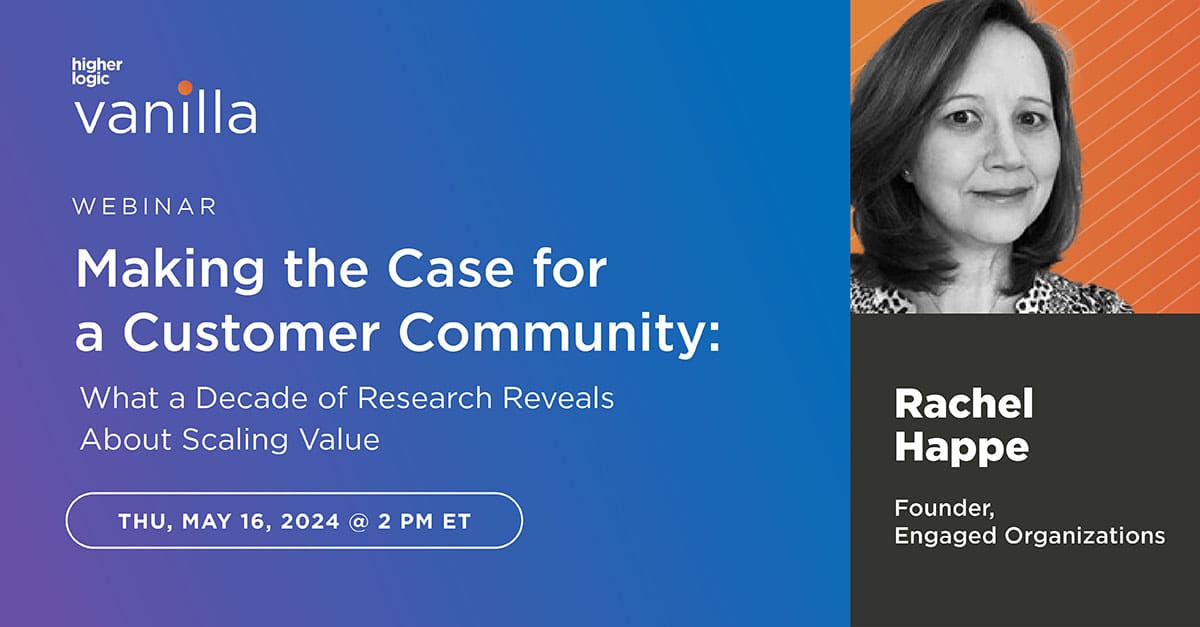
Are you building your community with the most valuable people in mind?
To combat this and to also focus community building in a proper way, I try my best—and encourage others— to use humanizing language. After all, community is all about people. Don’t be shy to use the term “People” when you are referencing your community participants – beyond them just being customers, volunteers, employees, etc. Thus, when looking at the most active and helpful people, they are in essence your Most Valuable People (MVPs). Taking this a step more, I have evolved this concept to the MVP principle so our whole team here at Vanilla takes a people first approach to community building.
Today I wish to share with you this MVP Principle and how you can use it to create amazing people first communities.
Internal MVPs
When people are working with us, they have taken the decision to use our software. However, what was the goal or reason for this? How do we make a community successful for the champions who made Vanilla their choice? How can you be successful regardless of what solution you choose? Think about your internal MVPs, of course!
Who are your Internal MVPs? These are the Most Valuable People in your organization that you want to ensure see value in your community project. What are the things that they care about that can make your community mission critical? What are the KPIs (Key Performance Indicators) or OKRs (Objectives and Key Results) that matter to these people?
For example you may identify, in your company, the departments that matter. You could consider these popular ones: Marketing, Support and the Product team. Each of these department will have key individuals with their own KPIs, along with the pressures to succeed. This is where you can position the community as a channel that can assist them. This will come down to you being proactive and initiating conversations about their goals and try to align community activities to these goals and objectives.
As a quick example here is how each department may see value:
- Marketing: the community is a source of leads, a channel to push messages or highlight content/events, a way to identify/connect with influencers.
- Support: a source of peer support reducing workload of customer service, a way to deflect tickets, a way to create knowledge base content, a way to make your FAQ more robust.
- Product: An important source for product feedback. Identify product issues, clarity in product use. Access to a quick focus group. Ability to crowdsource your roadmap and prioritize features.
Of course, you’ll want to report regularly on your successes to these leaders to ensure you stay on track. By reporting (and more importantly delivering) on their key concerns, you place your community project at the centre in assisting them.
In short, a community person who thinks about these internal MVPs and engages these decision makers will get the support they need for their community projects and hopefully in turn get the resources they need to ensure operational success.
External MVPs
This is where the art of community building and planning comes in. You now know what matters to the Most Valuable People within your company. Now is the time to make this work so that you can cultivate the Most Valuable People within your community. Some people may call this an ambassador program or super user program, but I see this more as a mindset for you, so your whole community cares and participates as much as possible.
So how do we start?
I would begin by looking at the list of the goals your Internal MVPs gave you and tie it to the things that people will care about. A community needs to provide value to people as much as they will give back to you. What are the experiences or things you can offer that provide them real value? How can you create a space that matters, of consequence, that they will care about?
Some of the things you can consider:
- Reward access to early features for people who write knowledge articles
- AMA with your CEO, COO or CPO (Chief Product Officer) for people who answer the most questions in the month
- A peek at the roadmap and ability to provide feedback for when their ideas get accepted.
- Recognize influencers who are most active in driving traffic, with a special badge in the community, at your events with a special meetup/meal/drinks, a physical award, or a handwritten thank you note.
Not every person in your community will become an MVP. Of course, we’d want everyone to be one, but that’s not the point. The goals is create value for a core group of people who can support your initiatives and the MVP internal goals you’ve identified. We have seen numerous communities successfully employ this tactic, where the MVPs were only 1% or less of their user base – but it drove important successes for their organization. When you can get a strong core on your side, this small vocal minority pulls others who will follow their lead. They may also seek to obtain special access themselves, which is why you can certainly promote the access MVPs get to others who join the community.
Even if people may not strive to join your MVP program, small things of value can still matter to creating a sense of caring or connection to the people of your community. For example, this could be a more public AMA with a product manager, ability to add ideas to a category so their opinions are heard, or simply recognition for answering questions with a thanks or a badge.
As a community owner, the key to any MVP External program will be to identify, encourage, recognize, and support the MVPs in your community. Reach out to people who are making positive contributions as early as possible. Use concepts like the community curve to level them up, empower these people to be leaders and take ownership of the space, especially when your team can’t be present 24/7. Most importantly keep these Most Valuable People engaged by giving them access, transparency and communicating with them. At the end these are people who are doing you the favour of being there for you and your company.
Community as the People Hub for Your Company
At the heart of the Most Valuable People principle is putting people first. When you build your community in such a way, it becomes a hub that is so indispensable, that no company would dare to allow it to remain fallow. The community owner or builder is at the centre pushing this message forward, but is uplifted by the allies they will build in the process both internally and externally. In the end, think people first, so they don’t become faceless – and you will ensure your community plan success!
Happy community building!



